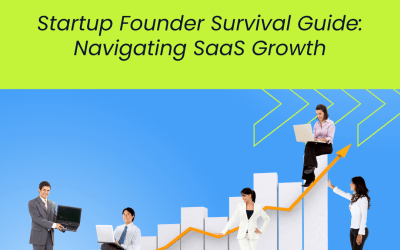Lead Generation Explained: Process, Strategies & Best Tools (2025 Guide)
In today’s highly competitive business world, relying on word of mouth or cold calls is no longer enough to grow. Startups, small businesses, and even large enterprises need a scalable system to attract potential customers and convert them into loyal buyers. This is where lead generation comes in.
But simply collecting emails or running ads isn’t lead generation—it’s much more strategic. In this guide, we’ll break down the lead generation process, proven strategies, and the best tools every founder and marketer should use in 2025 to stay ahead.
🔍 What is Lead Generation?
Lead generation is the process of attracting potential customers (leads), capturing their interest, and nurturing them until they are ready to purchase your product or service.
Think of it like dating—you first attract attention, then build trust, and eventually move into a long-term relationship (sales).
For startups, lead generation is the lifeline. Without it, your pipeline dries up and growth slows down.
📌 The Lead Generation Process (Step by Step)
-
Identify Your Target Audience
-
Start by creating a clear buyer persona: Who are your customers? What industries do they belong to? What problems do they want solved?
-
Example: A SaaS startup might target “HR managers in tech companies with 50–200 employees.”
-
Tools: Google Analytics, LinkedIn Insights, Zoho CRM.
-
-
Create High-Value Content
-
Content is the magnet that attracts leads.
-
Examples: blog posts, case studies, webinars, eBooks, or free tools (calculators, templates).
-
For coworking spaces, a content idea could be: “The Ultimate Guide to Choosing the Right Office for Your Startup.”
-
-
Attract Traffic Through Multiple Channels
-
SEO: Optimize blogs for long-tail keywords like “best lead generation process for startups.”
-
Paid Ads: Target decision-makers with Google Ads or Meta Ads.
-
Social Media: LinkedIn for B2B, Instagram for D2C brands.
-
Referral Programs: Incentivize existing customers to bring in new ones.
-
-
Capture Leads With Conversion Assets
-
Don’t just bring visitors—convert them.
-
Use landing pages with strong CTAs, forms, and lead magnets.
-
Example: A fintech startup offering a free financial planning eBook in exchange for email signup.
-
-
Nurture Leads Through Personalization
-
Most leads won’t convert immediately.
-
Use email marketing and marketing automation to stay top of mind.
-
Example: If someone downloads an SEO guide, follow up with an email about “5 Ways to Generate Leads With SEO.”
-
-
Qualify & Score Leads
-
Not every lead is valuable.
-
Use lead scoring in CRMs like HubSpot, Zoho, Salesforce to prioritize hot leads.
-
Example: A lead who visited your pricing page twice is warmer than someone who only read a blog post.
-
-
Convert Leads into Customers
-
This is where the sales team steps in.
-
Personalized demos, free trials, or consultations work best.
-
Example: A SaaS product offering a 14-day free trial with onboarding support.
-
🚀 Proven Lead Generation Strategies for 2025
-
SEO-Driven Content Marketing
Long-tail blogs, case studies, and pillar pages that rank organically. -
LinkedIn Outreach & Ads
Still the best channel for B2B lead generation. -
AI-Powered Chatbots
Capture leads instantly through website chat. -
Video Marketing & Webinars
Explainers, live demos, and thought-leadership sessions build trust. -
Influencer & Partnership Marketing
Collaborate with micro-influencers or industry partners to reach niche audiences.
🛠️ Best Tools for Lead Generation in 2025
-
HubSpot CRM – End-to-end inbound marketing & lead nurturing.
-
Zoho CRM – Affordable lead tracking with automation.
-
Mailchimp / ActiveCampaign – Email campaigns & drip marketing.
-
LinkedIn Sales Navigator – Laser-focused B2B targeting.
-
Unbounce / Leadpages – Build high-converting landing pages.
-
Apollo / Lusha – Prospect data and outreach tools.
💡 Why Lead Generation Matters for Startups
For startups and founders, lead generation is not just about filling a pipeline—it’s about building predictability and survival. With limited budgets and resources, the right strategies can:
-
Lower cost per acquisition (CPA).
-
Build consistent sales pipelines.
-
Help compete with bigger players using smarter tactics.
-
Create a steady flow of new business opportunities.
Example: A bootstrapped SaaS company generating 200+ inbound leads a month through SEO & content spends far less than one relying on expensive ads alone.
📊 Final Thoughts
The right lead generation process and strategies can transform your startup’s growth in 2025. By combining engaging content, smart tools, and data-driven campaigns, you’ll not just generate leads—you’ll build a predictable revenue engine.
🚀 Remember: In business, it’s not about the number of leads—it’s about the quality of leads you generate.
Start implementing these strategies today, and watch your pipeline turn into profit.
About CO-OFFIZ : Coworking Space in Delhi-NCR
CO-OFFIZ is a coworking space in Delhi-NCR tailored for young professionals, startups, freelancers, and entrepreneurs. We emphasize a collaborative work culture that enhances productivity while providing a hassle-free and aesthetically pleasing environment based on Vastu principles.
Our modern amenities include high-speed internet, unlimited tea/coffee, breakout zones, power backup, and CCTV security. Our vibrant meeting rooms feature LED TV projectors and ergonomic chairs, fostering an ideal workspace.
With locations in in Preet Vihar (East Delhi), Janakpuri (West Delhi), Netaji Subhash Place (North Delhi), Noida Sec-63 and Gurugram Sec-58, we offer flexible seating, dedicated desks, and private cabins at competitive prices, all conveniently located near metro stations for easy access.



